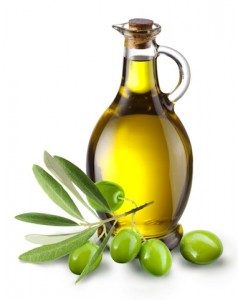 Fat is always a hot topic of discussion and much debate in the health and fitness world. However, a lot of confusion surrounds this topic and I’d like to shed some light on how fats appear in various forms in our diets, as well as what’s good, what’s bad and how certain fats are needed to promote good health.
Fat is always a hot topic of discussion and much debate in the health and fitness world. However, a lot of confusion surrounds this topic and I’d like to shed some light on how fats appear in various forms in our diets, as well as what’s good, what’s bad and how certain fats are needed to promote good health.
First things first, let’s start with some FAT terminology
I’ve broken fats into 2 dietary categories (good, bad), as well as the various ways fats appear as health terms.
Good Fats
Good Fats are also known as HDL good cholesterol and are found in foods, such as: avocados, nuts, plant oils. Good Fats include:
Unsaturated Fats – lower melting point, likely to be liquid, ie: oils
Monounsaturated Fats – promote insulin resistance, ie: olive oil, whole milk, nuts, red meat
Polyunsaturated Fats – protect against cardiovascular disease, ie: nuts, seeds, fish, leafy greens
Oleic Acid – Most found in olive oil. Can help prevent the negative effects of bad cholesterol
Omega-3 Fatty Acids – lower risk for heart attack, ie: fish oils
Omega-6 Fatty Acids – lower the risk for cardiovascular diseases, ie: sunflower oil
Fat Soluble Vitamins (A,D,E,K) – vitamins that contain vital nutrients
Bad Fats
Bad Fats are also known as LDL bad cholesterol and are found in: hydrogenated oils, animal fats, trans-fats and lard
Saturated Fat – higher melting point, solid form ie: animal fats, cream, cheese, butter, lard, egg yolks
Trans Fats – chemically altered through hydrogenation making products easier to sell, ie; cookies, chips, etc.
Fats In The Body
How and where fats appear throughout our bodies.
Lipids – Energy storing classification of fats in the form of triglycerides, cholesterol, phospholipids
Essential Fatty Acids – the body requires these for good health, ie: Omega 3, Omega 6
Adipose Tissue/Visceral Fat (aka beer/pot-belly); apple shaped body type – fat surrounding vital internal organs
Abdominal Fat – Associated with cardiovascular disease, obesity and Type 2 Diabetes
Subcutaneous Fat – fat underneath the skin
Epicardial Fat – fat surrounding the heart
Fat Free
And, of course we can not forget about (possibly) the hottest debated fat topic: Fat Free Food, which is a food or drink that has been altered/modified in some way to contain to contain zero (or, only trace amounts) of fats. Technically, it’s a food product labeled with less than .5g/serving.
Information on Fats
How Fats Help Your Body
Whew! Talk about a lot of fat. Notice that there are many fats that are good for you, as well as a list of fats that are bad for you. Nutritionally speaking, our bodies need some fat to function properly. Fat is critical to deliver key nutrients, such as: Vitamins A, D, E, and K which are termed “fat-soluble” because they need to chemically bind to fat in order to be absorbed. So, vitamins can not be absorbed properly if the right kind of fat isn’t available. Make sense? That is why having a nice dark leafy green salad is best when paired with a serving of avocado or olive oil. Foods with “healthy fats” such as avocados and nuts take longer to digest, therefore keeping you fuller, longer.
Caloric Breakdown of Fat
Fat has the highest concentrated caloric amount per gram. Carbohydrates and proteins both have 4 calories per 1 gram. Fat contains 9 calories per 1 gram, so if you are a calorie counter for weight loss, the reasoning for you to want to watch your fat intake would sound sensible. However, fat-free options for foods/drinks won’t necessarily be your key to weight loss success or better health. Better health will always come down to a safe balance of nutritious foods, full of the important vitamins and minerals.
Fats In Your Diet
When it comes to fat in the diet world, it is almost like a game of limbo – how low can you go? Keeping fat intake to about 10-20% of your diet, fats must still be chosen wisely. For example, combining fats and carbs in the same meal can keep your blood sugar stable and avoid hunger-induced spikes and dips. A study in the journal Diabetes Care found that a diet rich in monounsaturated fats (such as almonds) may prevent the accumulation of abdominal fat. But, you’ll still want to spread out your fat – carb combos through the course of the day. Examples would be natural nut butter on whole-grain toast for breakfast, olive oil drizzled on your salad at lunch, or my homemade home made ‘guacummus’ (insert recipe link here) with crunchy raw veggies as a snack.
Trans Fats – The Worst of the Bunch
I’m sure by now you know to avoid “trans fats” because they can raise LDL (bad cholesterol) and lower HDL (good cholesterol). However, unfortunately labeling laws have allowed manufacturers to label products as “zero trans fats” as long as they contain less than .5 grams/serving. You’ll want to avoid them further, to be safe, and refrain from partaking in an ingredients list that lists “hydrogenated” or “partially hydrogenated oils”.
Safe Portion Size Guide for Good Fats
Saturated fats, ie: 1 TBSP coconut oil (14 g fat, 117 cal)
Polyunsaturated fats, ie: 1 oz dry, roasted sunflower seeds(14 g fat, 165 cal)
Monounsaturated fats, ie: 1/4 avocado (7 g fat, 80 cal)
Omega- 3 Fatty Acids, ie: 3 oz cooked wild salmon (4 g fat, 114 cal)
Omega- 6 Fatty Acids, ie: 1 TBSP almond butter (9 g fat, 98 cal)
[highlight]Enjoy this post? Please share with your friends and family![/highlight]
[pinterest count=”horizontal” float=”left”]
